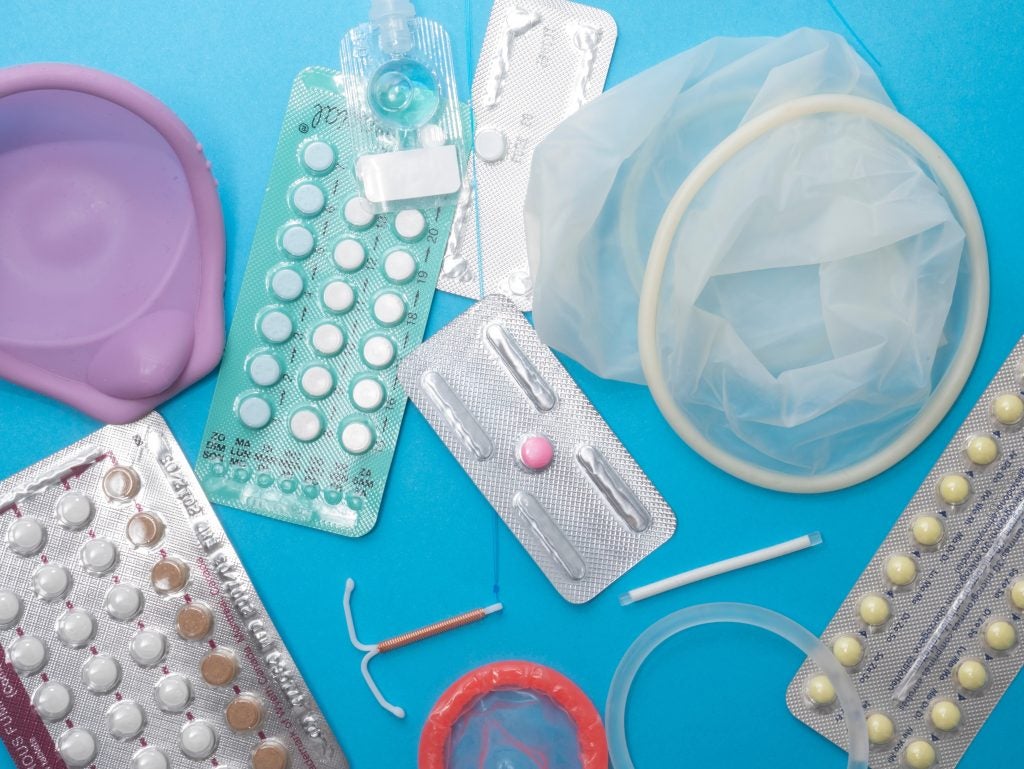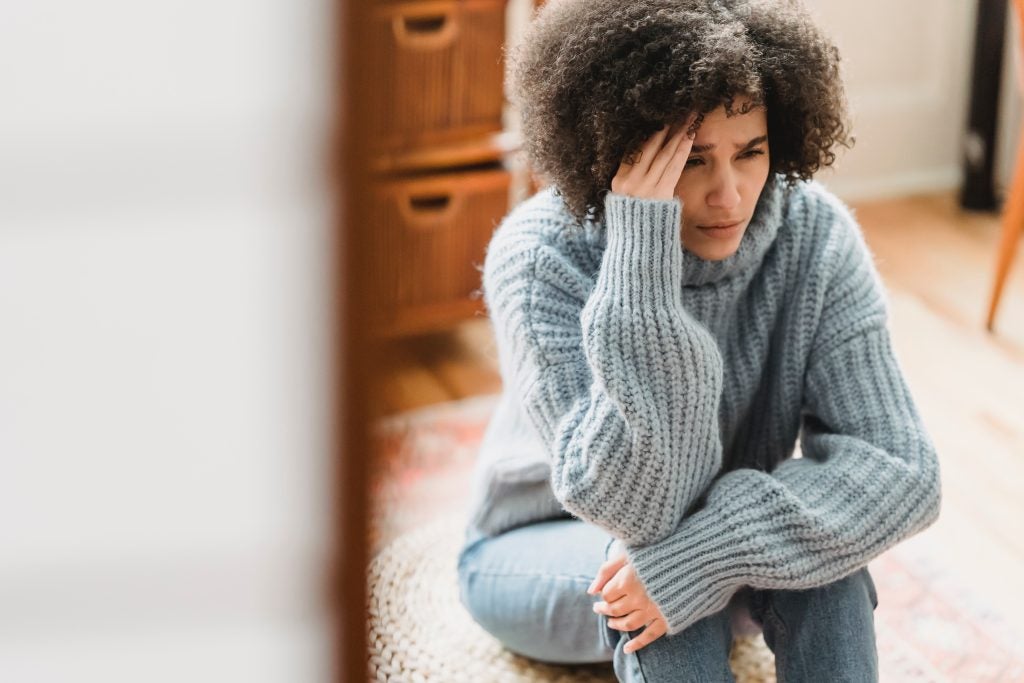
Combination pills, also called “combo pills,” or simply “the pill,” are a form of oral hormonal birth control which contain the hormones estrogen and progestin.1 Combination pills are commonly used as a method of preventing pregnancy, but can also be used for their non-contraceptive benefits such as improving acne, decreasing menstrual cramps or other premenstrual symptoms (PMS), and producing shorter and lighter menstrual periods.2 These pills typically come in a pack with one pill taken every day. This method of birth control is relatively safe, affordable, and effective to use.1 If you are hoping to use combo pills, it is recommended to discuss your options with a healthcare provider to decide which prescription would be best for you.
Table of Contents
How Do Combination Pills Work?
Combination pills are named as such because they contain a combination of the hormones estrogen and progestin. In the body, these hormones are responsible for preparing the body for pregnancy and maintaining the menstrual cycle. When taken in the combination pill, the hormones prevent pregnancy by preventing ovulation, thickening the cervical mucus, or changing the endometrial lining of the uterus.3
Pregnancy occurs when a sperm fertilizes an egg, and the fertilized egg implants itself in the endometrial lining of the uterus. Combo pills use estrogen and progestin to prevent the various stages of this process.1,4 These hormones prevent ovulation, which is the release of an egg from an ovary. If no eggs are released from the ovary, fertilization and pregnancy cannot occur.1 The hormones also thicken the cervical mucus, preventing sperm from passing through the cervix into the uterus and fallopian tubes. By preventing sperm from meeting an egg, pregnancy cannot occur.1 These hormones also change the endometrial lining of the uterus to further prevent implantation of an egg. If a fertilized egg cannot implant in the endometrial lining of the uterus, pregnancy cannot occur. The hormones in combination pills target all three of these stages of fertilization and implantation to provide 91% effectiveness against pregnancy.5
The combination pill only works to prevent pregnancy and thus cannot protect against sexually transmitted infections (STIs).1 Therefore, it is best to use the pill in conjunction with a barrier contraceptive, such as the female condom or male condom, which further reduces the chances of fertilization.1 Doing so, in addition to getting tested regularly, greatly reduces the risk of contracting or spreading STIs.
Side effects of the combination pill
The hormones in the combo pill, especially estrogen, can produce side effects which can range in severity and typically subside after two to three months of use.1 The following is a list of possible side effects.

- Headaches and nausea.1,4
- Sore or swollen breasts.1,4
- Spotting (light bleeding in between regular periods).1,4
- Lighter periods.4
- Mood changes.4
- Weight gain.2
If any negative side effects last longer than three months, the user should consult their doctor to discuss the possibility of changing the dosage of their medication or trying a different form of contraception.
There can also be side effects upon discontinuation of the combination pill.1 It takes the hormones a few days to completely exit the body, so most of these side effects will subside within that time. However, it takes anywhere between a few weeks to several months for a regular menstrual cycle to establish itself again. The side effects of coming off the pill are generally opposite of the side effects associated with using the pill. They include mood changes, changes in menstrual flow and vaginal discharge, and the return of acne. The pill is completely reversible, and therefore an individual can become pregnant immediately after discontinuing its use.1
How Safe is the Combination Pill?
The combination pill is relatively safe to use, but all medications come with potential risks. There is a risk that another medication the user is taking could interact with the combination pill, making it less effective or possibly harmful for the user.1 It is recommended for individuals to consult with their doctor about whether the combination pill is safe for them to use.
The combination pill should be avoided if the following pertains to an individual:
- Older than 35 and smokes cigarettes1,6
- Blood clots or vein inflammation1,7
- Breast cancer1,7
- Overweight7
- Frequent migraine headaches with aura (seeing flashes or zig-zagging lines)1,6
- Serious heart problems such as a heart attack, angina, or stroke6
- Uncontrolled high blood pressure1,6
- Diabetes or liver disease1,7
- Breastfeeding within the first three weeks of giving birth1,6
All of above risk factors may be caused or worsened by the estrogen in combination pills. Other forms of contraception, such as the progestin-only pill (POP) may be better options for these individuals to take. Progestin-only pills do not contain estrogen, and therefore do not have the side effects associated with estrogen, making their overall side effects less severe. However, progestin-only pills are more time sensitive and do not carry some of the advantages of combination pills. It is best to consult with a doctor about which pill best accommodates the user’s needs.
It is recommended to wait three to six weeks after birth before starting the combination pill. This is because the breast milk can contain traces of the pill’s hormones, which can reduce the quality of breast milk within the first three weeks of breastfeeding.1,7 Although the hormones are unlikely to effect the baby it is encouraged to discuss breastfeeding with a doctor before beginning the combo pill.1
There is always a small chance of getting pregnant while on the combination pill, even if taken every day as directed. If this occurs and the user continues taking the pill, unaware of the pregnancy, the combination pill will not increase the risk of birth defects early in pregnancy.1,6 However, it is recommended to stop the use of the combination pill if pregnancy is suspected and to take a pregnancy test.6
Abnormal Symptoms
The combination pill does not work for everyone and often has more severe side effects than the progestin only pill. Estrogen-containing hormonal birth control has a three to six-fold increased risk of developing blood clots.2 If a user experiences any of the following ACHES, they should stop taking the pill immediately and consult their doctor:
- Abdominal pain.2,6
- Chest pain.2,6
- Headaches (usually sudden and severe).1,6
- Eye problems including blurred or changed vision.2,6
- Severe leg aches, pain, or swelling.1,6
Other abnormal symptoms to be wary of can include:
- New lumps in the breasts.6
- Aura (seeing flashes of light).1
- A sudden missed period after a series of regular periods.6
- Difficulty breathing.1
- Yellowing of the skin or eyes.1,6
If an individual experiences any of the rare side effects, it is recommended to stop taking the birth control immediately and consult a doctor.
Non-Contraceptive Uses of the Combination Pill

Though the combination pill is an effective method of birth control, not all users take the pill to prevent pregnancy. Some users take the combination pill to help reduce their acne, regulate their periods, or alleviate premenstrual syndrome (PMS) symptoms.2,4,6
The combination pill can be taken to prevent or lessen the following:
- Acne.2,4,6
- Heavy or painful periods.2,4
- PMS symptoms.2,4
- Ectopic pregnancy.6
- Ovarian or breast cysts.2,4
- Endometrial and ovarian cancers.2,6
- Anemia (iron deficiency).2,4
For individuals who want to use the combination pill for its non-contraceptive benefits, talking to a doctor can help determine whether the combination pill is the best solution to any medical concerns.
Effectiveness of Combination Pills
The effectiveness of any birth control method can be defined as either the “perfect use” rate or the “typical use” rate.5 “Perfect use” means that the pill is taken every day, exactly as directed, with no mistakes or missed pills—thus, the perfect-use failure rate of the combo pill is relatively low at 1% perfect-use failure rate. This means that out of 100 oral contraceptive users, one will become pregnant within one year if the pill is used exactly as instructed. “Typical use” rates take natural human error into account, such as periodic mistakes or missed pills, and therefore are slightly more realistic. The failure rate among “typical” users of the combo pill is 9%, meaning that out of 100 combination pill users, nine will become pregnant within one year under typical use conditions.5
The effectiveness of the combination pill is dependent upon multiple factors. The largest factor is the regularity with which the pill is taken.1 The following are factors that can make the pill less effective.
- Experiencing vomiting or diarrhea in the past 48 hours.7
- Taking certain medications such as the antibiotic Rifampin, antifungal Griseofulvin, certain HIV medications, or certain anti-seizure medications.1
- Using the herb St. John’s Wort (an over the counter herbal supplement for depression).1
If a user is aware of factors that could affect the effectiveness of the combination pill, a barrier contraception (such as condoms) should be used in conjunction with the pill to ensure the individual is protected against pregnancy. Barrier methods offer the additional benefit of protecting against sexually transmitter infections (STIs), so by using a barrier method a user is greatly reducing their risk of contracting or spreading STIs.
Different Kinds of Combination Pills
Individuals who want to use combination pills have different options to choose from. Options may differ in hormones dosage or method of use. Combination pills typically come in a small package that contains a month’s worth of pills. All combination pill packages contain “active” pills, and some also contain placebo pills. Active pills contain the hormones estrogen and progestin, while placebo pills do not and are thus considered “inactive pills.” The active pills work to prevent pregnancy while the placebo pills act as a reminder for the individual to take their pills every day and remember when to start the next pack. While taking the placebo pills, menstrual bleeding will occur, resulting in a period.1,6 As long as a user takes their pills as instructed every day, they are protected from pregnancy, meaning they can have sex while not taking the active pills and still be protected.1
The active pills are available in three formulas that differ in hormonal dosage. In monophasic formulations, each active pill contains the same amount of estrogen and progestin. In biphasic and triphasic formulations, the dose of hormones in each pill varies throughout the month.6 Each individual is different and will find that some methods and variations will work better than others.
There are three methods available for taking combination pills: the “conventional method,” the continuous method, and the extended method. The three methods contain different amounts of active pills and thus result in varying numbers of menstrual periods produced each year.1
The Conventional Method
The “conventional method” is the most common method and consists of pills which are prescribed in monthly packs containing either 21 or 28 days’ worth of pills.1,4,6 Both pill packs work by preventing pregnancy for 21 days. The last 7 days, where no active pills are taken, allow for menstrual blood and endometrial lining to be shed, resulting in the individual getting their period. Each new pill pack is started on day 29 and the cycle resets, resulting in a period roughly every 28 days.1 The following list outlines what types of pills are found in either pill pack:
- In a 28-day pack, there are 21 “active” pills, all of which contain estrogen and progestin which work to prevent pregnancy. The last seven pills are “inactive” placebo pills which contain no hormones.1
- In a 21-day pack, there are only 21 pills which are all active pills containing hormones. There are no placebo pills in a 21-day pack. This means that there are no pills to take for the last seven days.1
Typically, an individual will use the 28-day pack if they have trouble remembering to take their pill every day and need a placebo pill to maintain the habit of taking the pill every day. An individual will use the 21-day pack if they can remember when to start their new pack and want seven days in which they do not have to take a pill.
The Extended and Continuous Methods
The extended method is designed to reduce the number of menstrual periods per year. Most extended pill packs contain 84 active pills in a row (about three months’ worth of pills), followed by seven inactive, placebo, pills.1 Bleeding occurs during the seven days the inactive pills are taken, resulting in only four periods per year.
In the continuous method, there are 12 packs which each contain 28 active pills, allowing the user to safely eliminate their menstrual bleeding for an entire year.6 This method works by thicken the cervical mucus and altering the endometrium so it is more difficult to sustain an embryo.
Using Combination Pills to Skip Menstrual Periods
Some users of the conventional pill packs choose to skip their period, mimicking the effects of the extended or continuous methods.1 To do so, a user simply skips the hormone-free week and begins taking their next pack immediately after. Bleeding or spotting when using this method is normal and should go away after about six months.1 We recommend taking prescriptions according to the instructions given by the pharmacist or physician, and consulting your physician if you have questions about changing the way you take your medication. If a user is taking a phasic combo pill, the pills need to be taken in the correct order and thus consulting with a doctor or pharmacist first is highly recommended.7
When to Start Taking the Combination Pill

Most individuals can start taking the combination pill at any time, even during their menstrual cycle. However, certain guidelines must be followed for those who have recently given birth, undergone an abortion, or had a miscarriage.7
If a pill pack is started within five days after the start of the menstrual period, it is called a “first day start.” If a pill pack is started after the fifth day of the user’s menstrual cycle, it is considered a “fifth day start.”7The effectiveness of the pill will vary depending on when the individual takes their first active pill:
- With a first-day start, the pill will begin working right away, although it would be a good idea to use a backup contraceptive (such as a male condom) for at least a week after starting the pill. Those with shorter periods (the menstrual cycle lasts less than 23 days), the pill may not be immediately effective and an additional form of contraception should be used.7
- If the pack is started after the fifth day of the menstrual cycle, the individual may not be fully protected for about a week. A backup method should be used for the first seven days after starting the pill to avoid pregnancy.7
Regardless of when the individual takes their first pill, it is advised to use backup contraception (such as the male condom) for at least a week to ensure that the hormones levels in the body are high enough to prevent pregnancy.
If an individual has had an abortion or miscarriage, they can begin taking the pill immediately after.7 If an individual has recently given birth, it is best to wait at least three weeks after giving birth to start taking the combo pill.1,7 An individual should wait six weeks if they are breastfeeding because the estrogen in the pill can inhibit milk production and be harmful to a developing infant.4
What to Do If You Miss a Pill
It can be difficult to remember to take a pill every day, so sometimes a pill is skipped or “missed.” A combination pill is considered “missed” if it has been longer than 24 hours since it should have been taken.7 Skipping a pill increases the chances of an egg being released from an ovary. It is strongly recommended that a backup birth control method (such as a condom) be used for at least seven days following a missed pill to prevent pregnancy.6 This may be more important for some types of pills than others, depending on the amount of hormones in the pill. If an individual has unprotected sex at any time during the seven days following a missed pill, it is recommended to use emergency contraception.6 Most pill packs will include specific instructions for what to do if you miss a pill, but in general, the following instructions can be used.
Instructions For Conventional Method Users
Instructions for what to do following a missed pill depend on how many pills that individual forgot to take and during what week those pills were skipped. The list below outlines what to do when a pill is skipped at any point during the 28 days of the pill pack:
- If one pill is skipped, the user should still be protected from pregnancy. They should take one active pill as soon as possible and continue the pack as usual. This might mean taking two pills on the same day. This may result in spotting, but active pills should still be taken as instructed.7
- If two or more pills are skipped, the user may not be protected against pregnancy. They should take the last pill which was skipped. This could mean taking two pills on the same day. The user should use another form of contraception (such as condoms) for the next seven days. If there are seven or more pills at the end of the pack after the last missed pill, continue to use the pack as usual, including the hormone-free week. If there are less than seven pills left after the missed pill, finish the pack as usual and begin taking the next pack once the active pills run out; this means skipping the hormone-free week.7
- If any inactive pills are skipped during week four, throw the missed pill away. There is no need to take these pills because they simply act as a reminder to take pills. Begin the new pack of pills no more than seven days after the last active pill was taken.
Regardless of when the active pill was skipped, it is always recommended to use a barrier contraception for a week following the skipped pill.7 If it is possible that the user is pregnant, they should stop taking the pill, and take a pregnancy test around three weeks after the possible conception.
Instructions for Continuous/Extended Method Users
Unlike the conventional method, instructions for what to do following a missed pill depend on whether the pill was skipped before or after day 21. The list below outlines what to do when a pill is skipped while using either the extended or continuous method:
- If any pills are skipped
on day one through 21, follow the
instructions for the conventional method above.
- Up to seven active pills can be skipped in a row after day 21, but an individual should never go more than seven days without taking any hormones, as this will greatly increase the risk of pregnancy.
- If more than seven active pills are skipped after day 21, take one active pill as soon as possible and continue the pack as usual, remembering to use a backup method of birth control.
Accidentally skipping a pill is almost inevitable when taking the combination pill. If one pill is missed, simply take the skipped pill and follow with the next active pill as usual. Sometimes this can mean taking two pills on the same day. If two or more pills are missed, take the skipped pill and the next one as scheduled. To ensure that the estrogen and progestin levels of the body have returned to their appropriate levels, we recommend users rely on a barrier contraception for a week after the skipped pills.
Concluding Remarks

The combination pill is a method of birth control which prevents pregnancy using the hormones estrogen and progestin. The three common methods of combination pills result in periods every month, every three months, or not at all. It offers many benefits including reducing PMS symptoms, clearing up acne, and producing more regular periods. It is recommended to consult with a doctor first to determine whether this form of birth control is best for the user. Whatever the reason for using the combination pill, it is a safe, effective, and convenient method of birth control used by many individuals.
For more information about the various types of birth control, click here!
References
- “Birth Control Pills.” Planned Parenthood. , n.d. Web. 20 January 2020.
- “Birth Control Pills: General Information.” Center for Young Women’s Health, 18 May 2018.
- Baldwin, J., Baldwin J., and LeVay, S. Discovering Human Sexuality. Massachusetts: Sinauer Associates, Inc.,2009.
- “Birth Control Pill.” Cleveland Clinic.
- “Contraception.” Centers for Disease Control and Prevention, Centers for Disease Control and Prevention, 1 Nov. 2019.
- “Combination Birth Control Pills.” Mayo Clinic, Mayo Foundation for Medical Education and Research, 9 Jan. 2019.
- NHS Choices, NHS.
Last Updated 5 March 2020.
